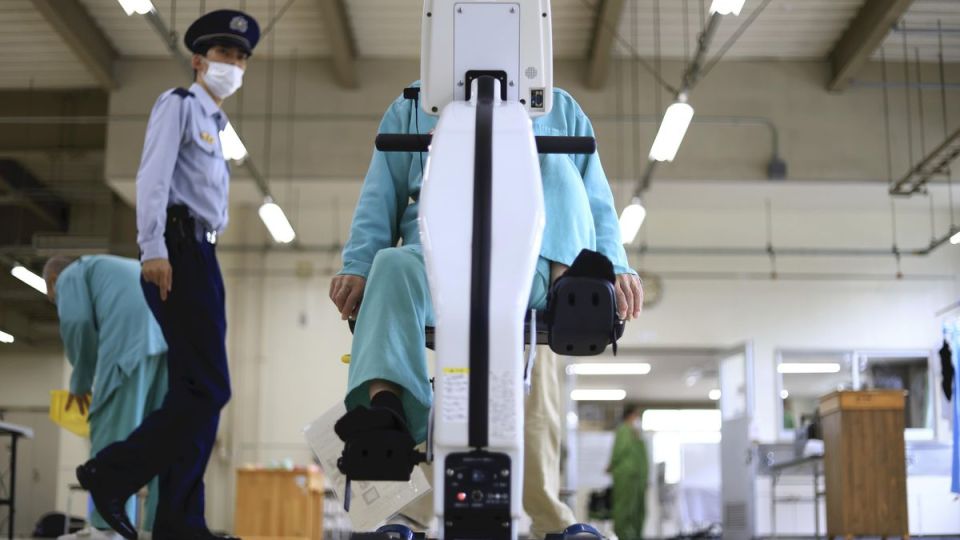May 30, 2025
TOKYO – Changes in the Penal Code’s sentencing categories — the first since the law was established in 1907 — mark a significant shift toward a more flexible system with a greater focus on rehabilitation and preventing recidivism after an inmate is released.
The code’s categories of “imprisonment with labor” and “imprisonment without labor” will be abolished as of Sunday and replaced by a single “confinement” category. This will allow for a more flexible, personalized approach to individual inmates that combines conventional prison work with new forms of guidance and education. Prisons across Japan have been conducting such programs on a trial basis, but success will require addressing a range of issues, including changing the mindset of prison staff and providing support for social reintegration after inmates are released.
The “confinement” sentence will require inmates to be detained in a penal institution, but the revised law stipulates that “necessary” assigned work will be done and “necessary guidance” can be provided to help prisoners rehabilitate and better themselves. Prison labor will no longer be mandatory. The “imprisonment with labor” and “imprisonment without labor” categories will be abolished.
These changes are being introduced against a backdrop of a graying prison population and worsening recidivism rates.
In 2023, a record-high 14.3% of the people who entered the prison system were aged 65 or older. Many of these elderly prisoners are unable to keep up with prison work due to their declining physical strength and cognitive function. Of the people arrested for Penal Code offences that year, 47% were repeat offenders.
“The way we deal with inmates needs to place greater emphasis on helping them get back on their feet,” a senior Justice Ministry official said.
Five years ago, Fuchu Prison in Fuchu, western Tokyo, began conducting activities designed to “improve physical functions” as a de facto form of rehabilitation for elderly inmates. Prisoners who find it difficult to do regular labor such as assembling furniture instead engage in strength training, including riding exercise bicycles, and mental exercises, which involve memory tests on digital devices.
“I had a back pain, so before I could do only simple tasks like folding cloth,” said an 86-year-old inmate currently behind bars for a ninth time because he repeatedly shoplifted due to hardship. “My back is much better now thanks to the rehabilitation program. After I leave prison, I want to register at a human resources center for elderly people, find a job and get my life back on track.”
Inmate-specific groups
The criteria used to divide prisoners into groups also will be overhauled under the revised law.
Until now, the ministry has mainly split inmates into first-time offenders and repeat offenders. This uniform standard has been dubbed a “uniaxial assessment” that in some cases resulted in inmates who were repeat shoplifters doing prison labor at the same location as members of organized crime syndicates.
This will change from June with the introduction of new standards that provide a “multiaxial assessment.” Under this system, prisoners will be divided into groups based on specific details such as age, physical health and whether they have a disability.
Inmates will be split into 24 different groups, including “elderly care” mainly for prisoners aged 70 or older and who struggle to live independently due to dementia and other reasons, and “addiction recovery” for prisoners who have a history of using drugs.
Support after release crucial
About 34,000 inmates are held at penal institutions across the nation. According to a senior Justice Ministry official, it is estimated that about only 20% to 30% of the prison population, especially elderly inmates, will be handled with a focus on personalized guidance and education. The majority of inmates will continue to mostly do prison labor during their sentence.
Nevertheless, prison staffers will face a raft of challenges adapting to this new system of dealing with prisoners. These staffers will need to acquire the necessary expertise and also change their way of thinking. Another senior ministry official said, “It’ll take some time until every prison officer adjusts their mindset to place the focus of their job on helping inmates rehabilitate.”
The ministry plans to provide thorough training for prison staffers on this issue.
Support for inmates after their return to society also will be essential. Data shows that about 70% of prisoners who reoffended and returned to prison had been unemployed, so inmates who are unable to find a job after being released are likely to again turn to crime.

